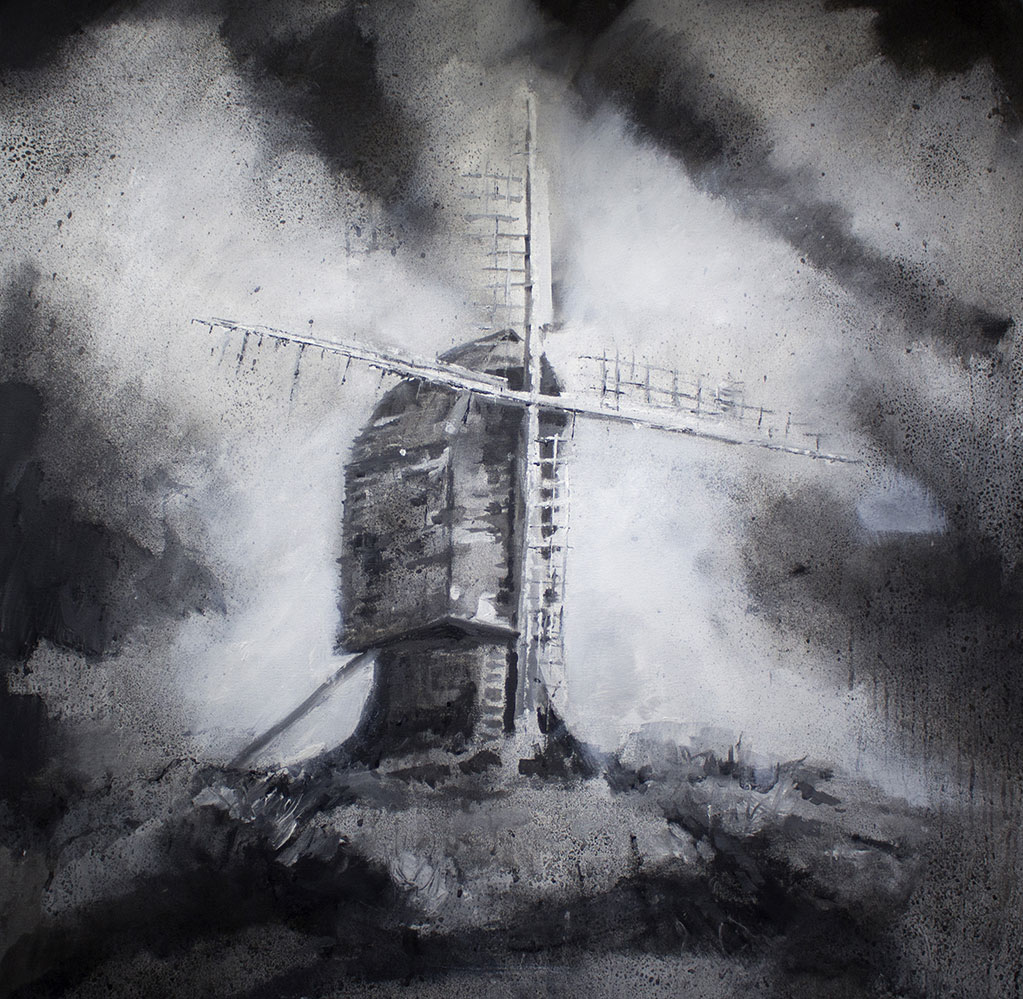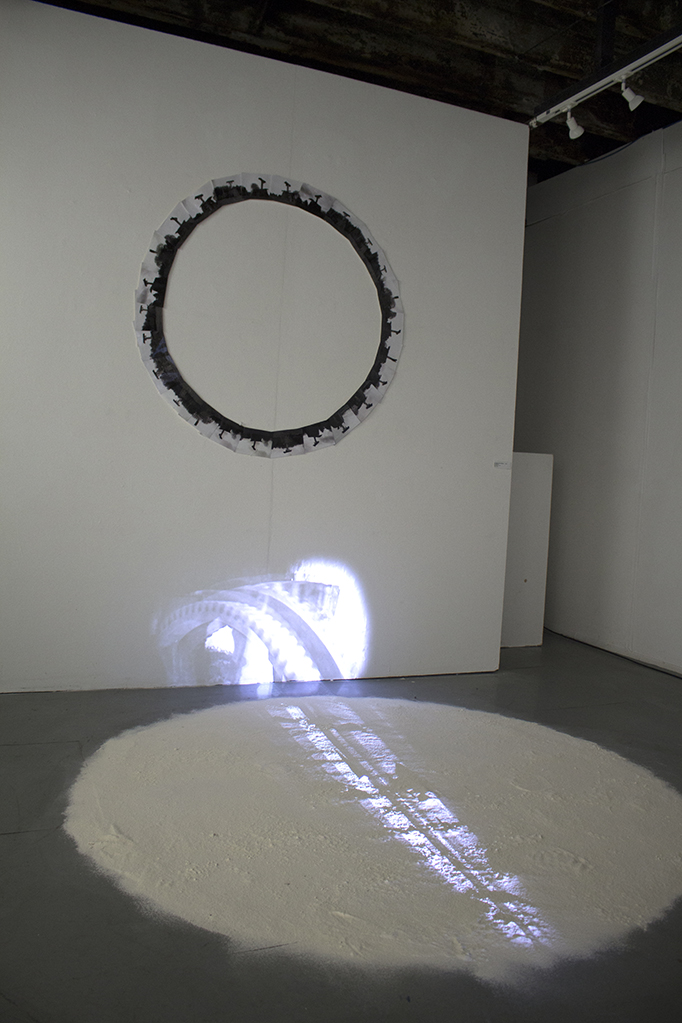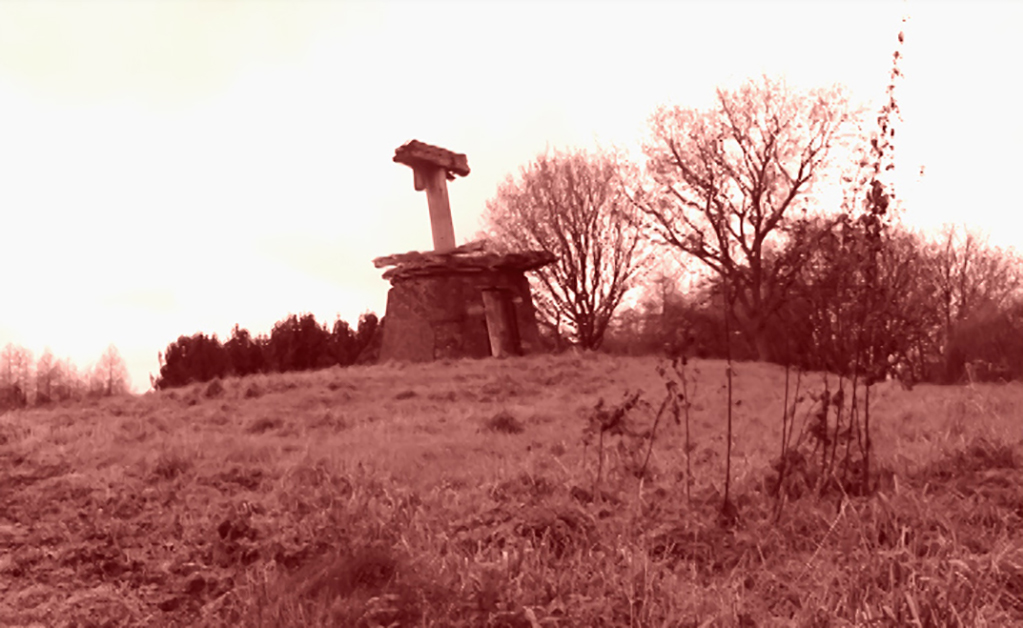
Old Essington Windmill 1905,
Essington Windmill; an artist’s perspective.
………..‘a sense of place uniting local history with drawing, film and photography’
As I drove past Windmill Farm in Essington I caught a glimpse of the splendid, impressive structure sitting majestically, like an ancient monolith on a mound of earth dominating the immediate landscape.It was encircled by a wonderful vista far reaching from the Wrekin in Shropshire to Sedgley Beacon in the Metropolitan borough of Dudley. After considerable research[1], I discovered this structure was in fact the ruin of Essington Windmill; and furthermore, was steeped in local history for well over 200 years. The mill served local communities, grinding grain into finely milled flour using its strategic location and available wind energy to turn the sails for rotating the mill-stone. I quickly became captivated andbewitched by the structure and entwined histories that it inspired my artistic energies to produce a body of art work as a testament to this crumbling monument.
My art exhibition aspires to capture an essence and spirit of the mill through a diverse range of media exploring the mill in its various stages of existence. Using drawing, film and photography and underpinning historical research, the mill is depicted majestically from past to present day and the monochromatic theme aims to provide a seductive narrative for the audience. Furthermore, the exhibition ultimately hopes to engage the audience through an artistic, poetic sense of place and re-connection with local history
Susan Brisco
March 2018
[1] https://go.walsall.gov.uk › Libraries, museums and arts › The National Archives. Local History Centre, Walsall.
About the Windmill: The remains of Essington Windmill stand on a mound in the grounds of Windmill Farm, Essington which is located between Cannock and Wolverhampton. A post mill by design, the Windmill was built in 1641 by the Vernon family to mill grain for the local communities and proved to play a vital role for the economics and importance of Essington village. Historically, windmills were introduced in 12th Century by crusaders returning from the Holy Wars.

Monochrome paintings: The monochrome landscapes capture the windmill in various stages of existence portraying a narrative storyboard and testament to its life forms from grandiose and stylish to unpretentious and broken. A dramatic black and white palette allows for focus on structure and form without the distraction of colour.The “marks” imply discrete traces of paint in a state of turbulence: dripping and drizzling, stabbing and dabbing as though mimicking the violent crushing of grain and pounding of winds blowing across the landscape

Essington Windmill 2018

Essington Windmill Circa 1960, Oil on Canvas, 90 x 90 cm
‘Photographic Joiners’ play with the notion of observing the mill from multiple viewpoints,alluding to the fragmented way we naturally gaze at objects. The selection of photographic joiners resonates viewing in a real world and highlights the charming brokenness of elements.

Photographic Joiner Brick detail


Her Majesty’s Duty (duration 7min): (filmed at Daniel’s Watermill, Bridgnorth). The film suggests adamant workings within, and relentless turning powers fulfilling a compelling duty to crush grain. The raking effect of projected light interacts with the materiality of the flour circle to an accompanied rhythmic beat.

Her Majesty’s Duty, Film Installation View
[Recorded at Daniel’s Mill, Bridgenorth]

Her Majesty’s Duty, Film Still

Her Majesty’s Duty, Film still
– Her Majesty today (duration:8 min): The film depicts the windmill majestically standing, quietly alone upon its mound. A slow passage of time exudes as flora and fauna waft gently in the essential breeze as though tempting the mill to yet again propel her sails

Her Majesty Today, Installation view

Her Majesty today Film Still

Her Majesty Today, Film Still
Wheat: A Linnaeus scientifically-botanical response to the wheat plant suggests its different phases of growth and development. The study identifies the plant’s ultimate goal to nurture and ripen grain for a merciless fate between the crushing millstone

Wheat, Ink wash on canvas, 60 x 75 cm

Essington Windmill circa 2018, Ink wash on Canvas, 90

Millstone, Ink wash on canvas, 90 x 90 cm
Mill Stone: The intriguing patterned study resonates with grooves carefully carved into the fine sandstone material of the millstone. Each groove ingeniously collects channels of finely ground powder by forcing radial movements to to stock-piled treasure into sacs at the outer edges. The innocently seeming virginal millstone becomes tainted with superstition and bad omen by many a man, as it does not discriminate who or what it crushes.

Panorama view of Essington Windmill in 2018, Oil on Canvas, 30 x 182 cm

